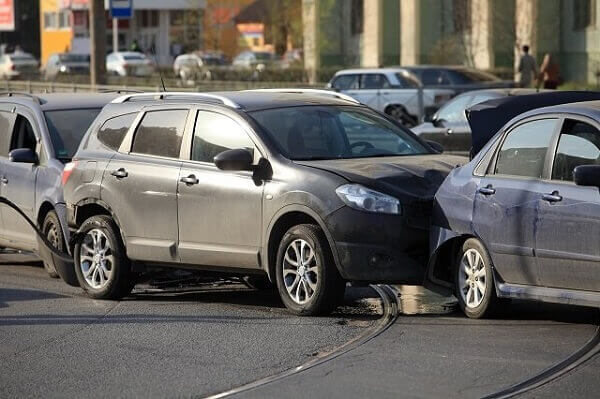
In a car accident claim, various terms get tossed around.
Two terms that are commonly misunderstood are “liability” and “responsibility.” While the meanings are similar, in the legal realm, these terms can vary quite significantly, especially when it comes to a personal injury claim.
Likewise, these terms dictate which party pays compensation to the victim. Understanding their differences and how they apply to your case can help you better comprehend the legal process and which party owes you compensation.
Liability versus Responsibility in Mt. Vernon Personal Injury Claims
Liability refers to a legal obligation.
Responsibility, when it comes to an injury case, is a person’s accountability for the outcome they have contributed to along with their legal obligation to correct it. The law assumes that a person should be responsible for their actions. Therefore, they expect people to act responsibly so that they avoid causing harm to another (e.g., not texting while driving or drinking and driving).
When a person fails that duty of responsibility, the courts may consider them liable for the injury and damages they cause.
The Four Elements of Liability
You may know that someone’s negligence is responsible for causing a car accident, but your knowledge is not enough. In a personal injury case, you must prove to the courts that the person is legally liable for your injuries, which means establishing four critical elements:
- The party owed you responsibility of acting reasonably;
- The party failed to do so;
- The failure led to an accident, which caused your injuries and financial losses; and
- The party that failed to fulfill their responsibility is liable for any consequences of their failed duty.
Is Fault the Same as Liability?
In personal injury cases, the purpose is to determine who is liable, because the person liable ultimately pays compensation to those they injure. One word you will often hear in conjunction with “lability” is “fault.”
From a legal standpoint, liability stands for the party who caused the accident, and typically, fault follows with it. However, not all cases have fault and liability the same. For example, Driver A might have caused the accident, but a defective part in the vehicle makes the manufacturer liable for the damages.
Typically, third parties are not involved in an ordinary car accident; therefore, the party at fault is usual the party liable.
Negligence: Proving Negligence Helps Establish Liability
Injury cases hinge on a single principle: someone was negligent.
Liability ties directly to negligence, because the party who is negligent is responsible for the accident and legally liable for damages.
Sometimes liability is determined because the at-fault party admits their responsibility. Other times, it is established using the preponderance of evidence rule.
The preponderance of evidence means that, during your trial, your side presents more convincing evidence than the other, which tips the scale more in your favor and shows the other party is at fault. Note that an injury case does not hinge on the concept of “beyond a reasonable doubt” like criminal trials do. Instead, the party with the more convincing evidence to establish their case can succeed in a personal injury trial.
The law assumes a reasonable, cautious person would not be negligent. Therefore, when someone’s act (or lack of action) is attributed to negligence, the court sees that as sufficient evidence to establish fault.
What if More Than One Party Is at Fault?
A person has a role in the accident, but in some car accident cases, you might have more than one party at fault.
For example, a vehicle is driving down the road and strikes a pothole. Their tire suffers a blowout, which forces them to lose control and hit another car. Later, it is determined that the pothole was significant enough to cause the accident, but also, the tire had deficiencies which caused it to blowout when it should not have. The driver that lost control of the car is at fault, but that driver can argue that the highway department and the manufacturer of the tire had a duty as well; thus, placing the liability on them.
A jury typically decides which parties are at fault and their contribution. They can assign responsibility based on how much each party contributed to the accident; then those parties would be responsible for paying their percentage of the damages awarded in the case.
For example, the jury determines that the highway department is 20% liable, the tire manufacturer is 50% liable, and the driver of the car is 30% liable.
A settlement of $100,000 would then require that the highway department pay $20,000, the manufacturer pay $50,000, and the driver covers the remaining $30,000.
What if the Victim Is Also at Fault?
Sometimes, the victim of an accident is also liable for an accident. When the other side can prove that the victim contributed, then the issue of contributory fault comes into play. Per Washington State Legislature RCW Chapter 4.22, the amount of fault the victim contributes reduces their settlement. For example, the court decides that the victim was 30% at fault; therefore, they can only recover 70% of their damages for the car accident case.
Most states use a modified comparative fault system, but Washington does not. In modified systems, if a party is 51 percent or more at fault, then they forfeit the right to seek compensation. In the state of Washington, a party could technically be 99 percent at fault and still seek compensation for that one percent – although it is highly ill-advised to seek compensation in cases like this.
Injured in an Accident? Let an Attorney Help Establish Fault, Liability, and Your Compensation Value
As you can see, the system of determining liability, fault, negligence, and ultimately the party who will pay compensation is highly complicated.
When you are suffering severe car accident injuries, you do not need to worry yourself with these technicalities. Instead, you want a law firm that can help establish your case and aggressively seek compensation on your behalf.
After a serious injury, contact Brett McCandlis Brown & Conner, PLLC. Call us to schedule a free case evaluation or request an appointment online.


